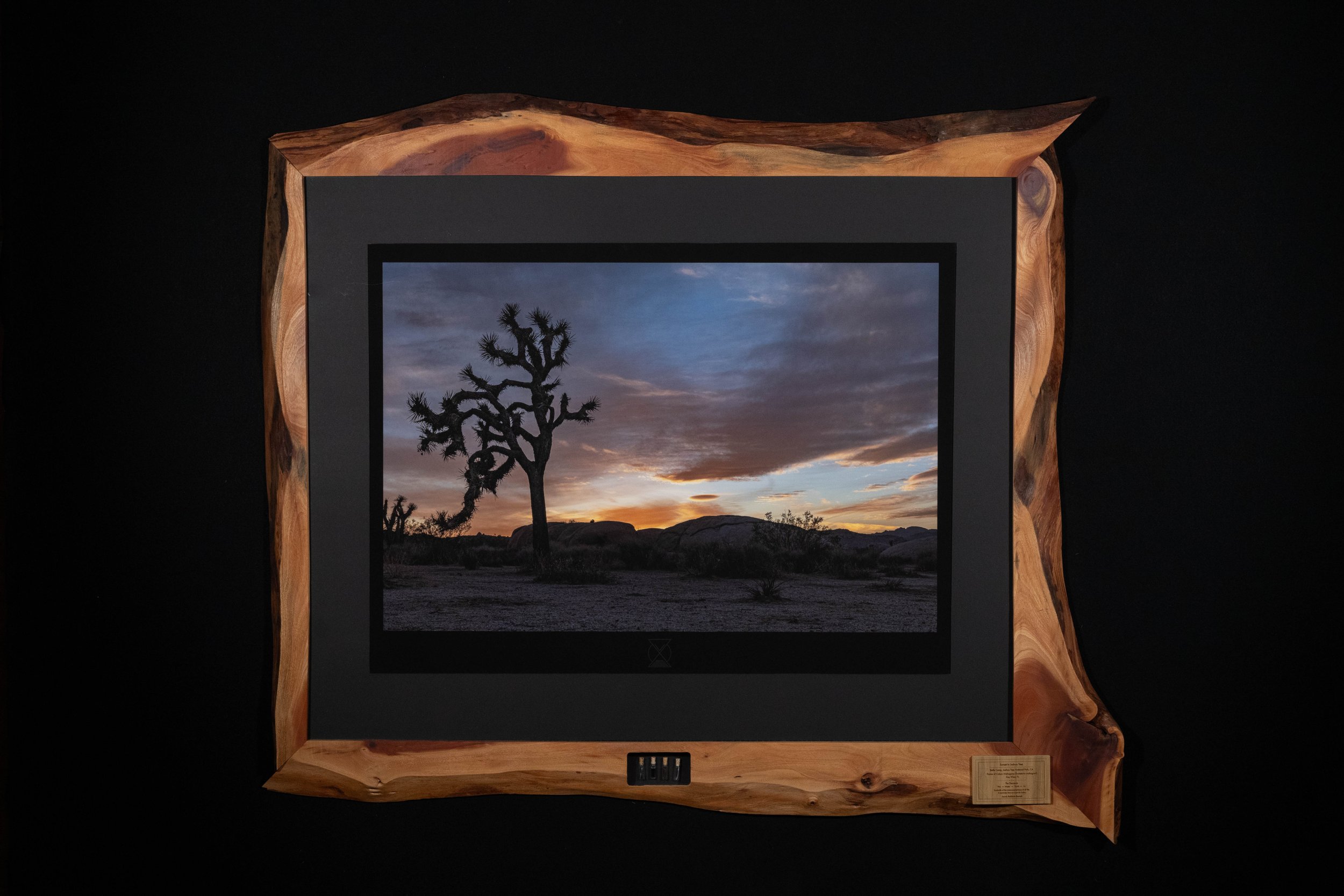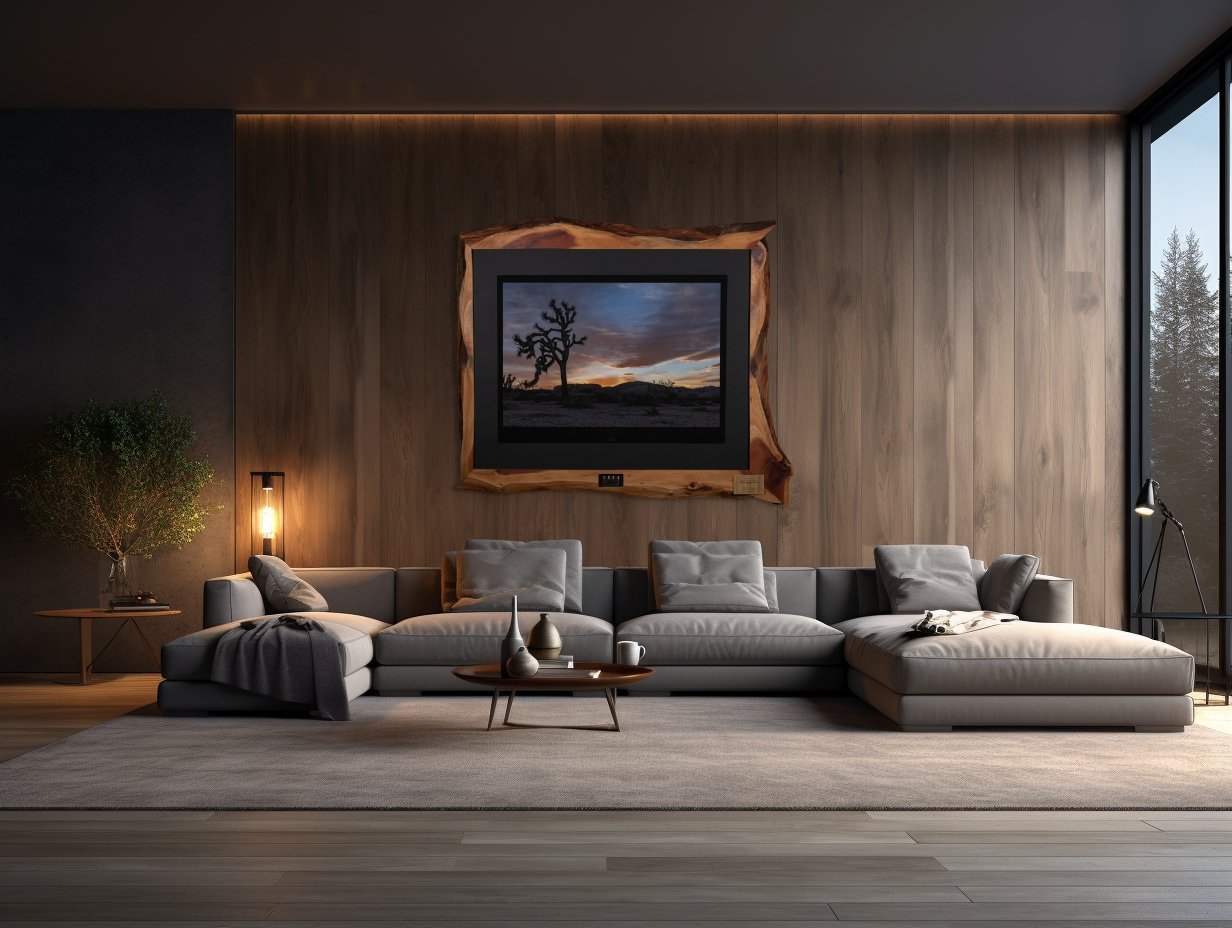Joshua Tree at Sunset - Belle Camp, Joshua Tree National Park, CA




Joshua Tree at Sunset - Belle Camp, Joshua Tree National Park, CA
Joshua Tree at Sunset
I took photos of various silhouetted Joshua Trees across various nights but loved this one more than the rest, such a beautiful plant and with the wonderful colors of the sunset it could not be beat. This photo was taken 4/14/21 at 7:15 pm.
WeForest Donation: $480 (What is this?)
Print Number: 1/3
Print Size: 20 x 30
Total Dimensions: 52 x 61
Hanging equipment and certificate of authenticity included.
Photograph
Joshua Tree (Yucca brevifolia)
As its scientific name will lead you to believe, the Joshua Tree is no tree at all. It is a Yucca, which is actually a type of succulent. This is the real secret to the Joshua Tree surviving and thriving in its desert habitat. Mostly confined to the Mojave desert, although also existing spread around the deep Southwest United States, it is the namesake of the National Park that bares its name. These plants are most definitely stalwarts of the desert as they can live for hundreds of years. They need that time to get as large as they are, some getting up to nearly 50 ft, as they only grow at most about an inch and a half per year. They do however put out amazingly large and beautiful flowers each year. In turn these flowers serve as food for many birds and insects in the desert. Most importantly for the tree is the Yucca Moth. This moth is the pollinator for the Joshua Tree and is an essential part of its life. Unfortunately the Yucca Moth is disappearing thanks to Global Warming. Hitting the plant from both sides, Global Warming is also make it dryer and hotter for the desert dweller and lending it to risk from fire as well. Nearly 13% of all Joshua Trees in the Mojave desert perished in the Dome Fire of 2020. It is estimated that 90% of all of the plants will be gone by the end of the 21st century, so make your way to the National Park when you can and enjoy them now, future generations will not be able to and this plant that has existed for 2.5 million years.
Location
Joshua Tree National Park, CA
One of the more recently designated national parks, Joshua Tree National Park, established in 1994, is basically as old as I am. Up there with Sanibel, FL, and Yellowstone National Park, it is also one of my absolute favorite places to take photographs. It is an immense park, located in southeastern California, east of Los Angeles, Joshua Tree includes parts of two deserts, The Mojave and The Colorado. This unique and harsh environment is home to a surprising amount of life, if you are patient and willing to look. Named for the “trees” that dot much of the landscape, the Joshua Tree is actually not a tree at all, but is the worlds largest succulent, which makes sense as they thrive in such arid places. Black-tailed Jackrabbits, and Kit Foxes hide under the branches of these plants, getting shade wherever they can, and Red-tailed Hawks and Crows nest in the branches, some of the few branches that exist across this vast area. This park also contains two oasis where huge fifty foot tall palms grow and yield a very different, although small by comparison, ecosystem. Song birds fly through the rustling palms and temperatures are noticeably cooler. Evidence that coyotes and foxes and bighorn sheep visit these areas are always plentiful but witnessing these excursions to water is not as abundant. I have loved spending time in the park over the past few years and have never been bored by what some might think is a dull/vacant landscape on first glance, it’s not.
Belle Campground
Belle Campground is one of the three campgrounds in the park where you do not need a reservation and are first come first serve. It is where my buddy and I have camped each time we have visited the park although I must say that you do need to get there early to ensure that you get a spot, even then you might still get shut out. It is centrally located within the park which makes for an ideal location to getting to some of the spots that he like to paint and that I like to photograph. It in its own right is a lovely location for both painting and photography as well!
FRAME
Cuban Mahogany (Swietenia mahagoni)
Known as Bald Cypress, this giant of the swamp is native to the southeastern United States. It can adapt to thrive in a wide range of soils, including very briny, salty, and water soaked areas. The pecky nature of the wood is created by a fungus that attacks the tree and eats away at its truck from the inside out. When the tree is cut down the fungus dies and leaves behind the beautiful architecture of its destruction. All of the Bald Cypress I have used in my frames has come from different parts of Louisiana.
THE ELEMENTS
Fire, Water, Earth, and Air
In the display case in the bottom of the frame, four items are preserved glass vials. The items represent the elements: fire (wood charcoal), water (mineral oil), earth (soil), and air (a milkweed seed). I include these items in my work as a symbol of the interconnectedness of all life on earth, and as a reminder that humans must do better.
The Plaque
I engrave a wooden information plaque for each work. The plaque includes what the photograph is of, the location of the photograph, what type of wood the frame is made of and where I got the wood from. The plaques also explain what the vials are in each display case, and even state the meaning of my logo. The plaques are attached magnetically and can be removed to read or to store on the back of each frame if you prefer not to have it displayed on the front.

